What’s Up?
I am somewhere in South America. I hope that you are well. Jim and Jen are at the office most days to help you with your mail order needs and Instructional Photo-Tour sign-ups. I still need folks for San Diego, Japan, Galapagos, the Palouse, and the Bear Boat (Grizzly Cubs) trips. Among others 🙂 Please e-mail for couples and discount info for all of the above. Click here for complete IPT info.
I will have internet access for all but 22 OCT thru 11 NOV while I am on the Sea Spirit. Best and great picture making, artie
Gear Questions and Advice
Too many folks attending BAA IPTs and dozens of the folks whom I see in the field, and on BPN, are–out of ignorance–using the wrong gear, especially when it comes to tripods and more especially, tripod heads… Please know that I am always glad to answer your gear questions via e-mail.
The Streak: 340!
Today’s blog post marks a totally insane, irrational, illogical, preposterous, absurd, completely ridiculous, unfathomable, silly, incomprehensible, what’s wrong with this guy?, makes-no-sense, 340 days in a row with a new educational blog post. There should be no end in sight until my big South America trip next fall. Or not… As always-–and folks have been doing a really great job recently–-please remember to use our B&H links for your major gear purchases. For best results use one of our many product-specific links; after clicking on one of those you can continue shopping with all subsequent purchases invisibly tracked to BAA. Your doing so is always greatly appreciated. Please remember: web orders only. And please remember also that if you are shopping for items that we carry in the new BAA Online Store (as noted in red at the close of this post below) we would appreciate your business.
|
This image was created on my Fort Desoto scouting trip with the hand held Canon EF 400mm f/4 DO IS II USM lens, the Canon Extender EF 2X III, and the Canon EOS 5D Mark IV. ISO 400. Evaluative metering -1/3 stop: 1/800 sec. at f/11. AWB. 61-Point Automatic selection/AI Servo/Shutter Button AF as framed was active at the moment of exposure (as is always best when hand holding). See the screen capture below for the placement of the selected AF point. Image #1: Great Egret juvenile/vertical head and neck portrait |
61- or 65- Point Automatic Selection AF Area Selection Mode
When creating vertical head and shoulders portraits such as Image #1 above, the Automatic Selection AF Area Selection Mode is the way to go with all Canon camera bodies that feature it. Once you acquire focus the system will hold quite well and you will be free to create the composition you want.
Which is the Stronger Image?
Which is the stronger image, the vertical or the horizontal? Be sure to let us know why. In this case, my feeling is that there is a clear winner. What do you think?
|
This image was created on my Fort Desoto scouting trip with the hand held Canon EF 400mm f/4 DO IS II USM lens, the Canon Extender EF 2X III, and the Canon EOS 5D Mark IV. ISO 400. Evaluative metering -1/3 stop: 1/800 sec. at f/11. AWB. I selected the AF point that was one row to the left and three up from the center AF point/AI Servo/Expand/Shutter Button AF as originally framed was active at the moment of exposure (as is always best when hand holding). See the screen capture below for the placement of the selected AF point. This image was cropped a bit from above, the left, and below. Image #2: Great Egret juvenile/horizontal head portrait |
An Exception…
Normally when creating tight head portraits like Image #2, I would use 61- or 65- Point Automatic Selection as my AF Area Selection Mode for the reasons noted above: once you acquire AF will usually hold well as you re-frame. After getting close and using 61-point for the first series of images I decided to go with AF Expand and try to get the selected AF point right on the bird’s eye. Both approaches worked well but this was my favorite horizontal even though the subject was a bit too centered and a bit small in the frame. But the head angle was perfect with Image #2 just as it was in Image #1: about two degrees toward us.
Side by Side DPP 4 Active AF Point Comparison |
Side by Side DPP 4 Active AF Point Comparison
For the horizontal image here on the left, Image #2, I used AF Expand as shown and tried to get the selected AF point right on the bird’s eye. Even when the bird is standing completely still it is not that easy when hand holding at 800mm. Being on a tripod would have been a lot smarter. With Image #1, on the right here, I went with 61-Point with excellent results. Note that the AF system activated a cluster of AF points just forward of and below the eye and tracked the subject perfectly. Actually, I was moving a lot more than the bird; that is why you must use AI Servo AF with static subjects when hand holding…
|
DeSoto in spring is rife with tame and attractive birds. From upper left clockwise to center: breeding plumage Dunlin, dark morph breeding plumage Reddish Egret displaying, breeding plumage Laughing Gull/front end vertical portrait, breeding plumage Laughing Gull with prey item, Laughing Gull on head of Brown Pelican, screaming Royal Tern in breeding plumage, Royal Terns/pre-copulatory stand, Laughing Gulls copulating, breeding plumage Laughing Gull/tight horizontal portrait, Sandwich Tern with fish, and a really rare one, White-rumped Sandpiper in breeding plumage, photographed at DeSoto in early May. |
Fort DeSoto Spring IPT/April 19-22, 2017. (meet & greet at 2pm on Wednesday April 19 followed by an afternoon session) through the full day on Saturday April 22. 3 1/2 DAYs: $1599. Limit 10. I will be offering small group (Limit 3) Photoshop sessions on Sunday afternoon and Monday morning if necessary. Details on that TBA.
Fort DeSoto is one of the rare locations that might offer great bird photography 365 days a year. It shines in spring. There will Lots of tame birds including breeding plumage Laughing Gull and Royal and Sandwich Terns. With luck, we will get to photograph all of these species courting and copulating. There will be American Oystercatcher and Marbled Godwit plus sandpipers and plovers, some in full breeding plumage. Black-bellied Plover and Red Knot in stunning breeding plumage are possible. There will be lots of wading birds including Great and Snowy Egrets, both color morphs of Reddish Egret, Great Blue, Tricolored and Little Blue Heron, Yellow-crowned Night-Heron, and killer breeding plumage White Ibis. Roseate Spoonbill and Wood Stork are possible and likely. We should have lots of good flight photography with the gulls and terns and with Brown Pelican. Nesting Least Tern and nesting Wilson’s Plover are possible.
We will, weather permitting, enjoy 7 shooting sessions. As above, our first afternoon session will follow the meet and greet at 2pm on Wednesday April 19. For the next three days we will have two daily photo sessions. We will be on the beach early and usually be at lunch (included) by 11am. We will have three indoor sessions. At one we will review my images–folks learn a ton watching me choose my keepers and deletes–why keep this one and delete that one? The second will be a review of your images so that I can quickly learn where you need help. For those who bring their laptops to lunch I’d be glad to take a peek at an image or three. Day three will be a Photoshop session during which we will review my complete workflow and process an image or two in Photoshop after converting them in DPP. Afternoon sessions will generally run from 4:30pm till sunset. We photograph until sunset on the last day, Saturday, April 22. Please note that this is a get-your-feet and get-your-butt wet and sandy IPT. And that you can actually do the whole IPT with a 300 f/2.8L IS, a 400 f/4 ID DO lens with both TCs, or the equivalent Nikon gear. I will surely be using my 500 II as my big glass and have my 100-400 II on my shoulder.
|
DeSoto in spring is rife with tame and attractive birds. From upper left clockwise to center: Laughing Gull in flight, adult Yellow-crowned Night-Heron, copulating Sandwich Terns, Roseate Spoonbill, Great Egret with reflection, Short-billed Dowitcher in breeding plumage, American Oystercatcher, breeding plumage Royal Tern, white morph Reddish Egret, and Snowy Egret marsh habitat shot. |
What You Will Learn
You will learn to approach free and wild birds without disturbing them, to understand and predict bird behavior, to identify many species of shorebirds, to spot the good situations, to understand the effects of sky and wind conditions on bird photography, to choose the best perspective, to see and understand the light, to get the right exposure every time after making a single test exposure, and to design pleasing images by mastering your camera’s AF system. And you will learn how and why to work in Manual mode (even if you are scared of it).
The group will be staying at the Red Roof Inn, St. Petersburg: 4999 34th St. North, St Petersburg, FL 33714. The place is clean and quite inexpensive. Please e-mail for room block information. And please call Jim or Jennifer at 863-692-0906 to register. All will need to purchase an Annual Pass early on Tuesday afternoon so that we can enter the park at 6am and be in position for sunrise opportunities. The cost is $75, Seniors $55. Tight carpools will be needed and will reduce the per person Annual Pass costs. The cost of three lunches is included. Breakfasts are grab what you can on the go, and dinners are also on your own due to the fact that we will usually be getting back to the hotel at about 9pm. Non-photographer spouses, friends, or companions are welcome for $100/day, $350 for the whole IPT.
Please Remember to use my Affiliate Links and to Visit the New BAA Online Store 🙂
To show your appreciation for my continuing efforts here, we ask, as always, that you get in the habit of using my B&H affiliate links on the right side of the blog for all of your photo and electronics purchases. Please check the availability of all photographic accessories in the New BIRDS AS ART Online Store, especially the Mongoose M3.6 tripod head, Wimberley lens plates, Delkin flash cards and accessories, and LensCoat stuff.
As always, we sell only what I have used, have tested, and can depend on. We will not sell you junk. We know what you need to make creating great images easy and fun. And we are always glad to answer your gear questions via e-mail.
I would of course appreciate your using our B&H affiliate links for all of your major gear, video, and electronic purchases. For the photographic stuff mentioned in the paragraph above we, and for everything else in the new store, we, meaning BAA, would of course greatly appreciate your business. Here is a huge thank you to the many who have been using our links on a regular basis and those who will be visiting the New BIRDS AS ART Online Store as well.
Be sure to like and follow BAA on Facebook by clicking on the logo link upper right. Tanks a stack!
Typos
In all blog posts and Bulletins, feel free to e-mail or to leave a comment regarding any typos or errors. Just be right 🙂

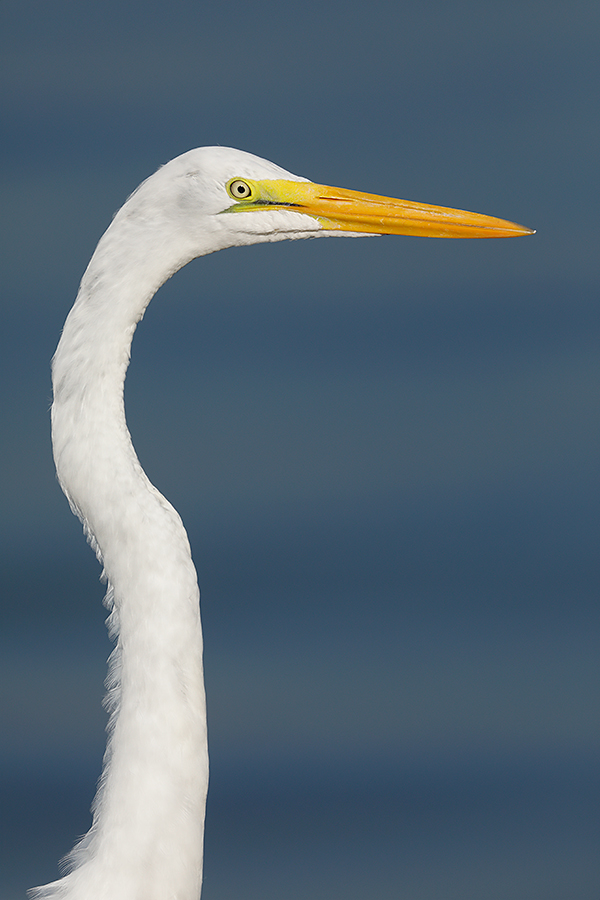
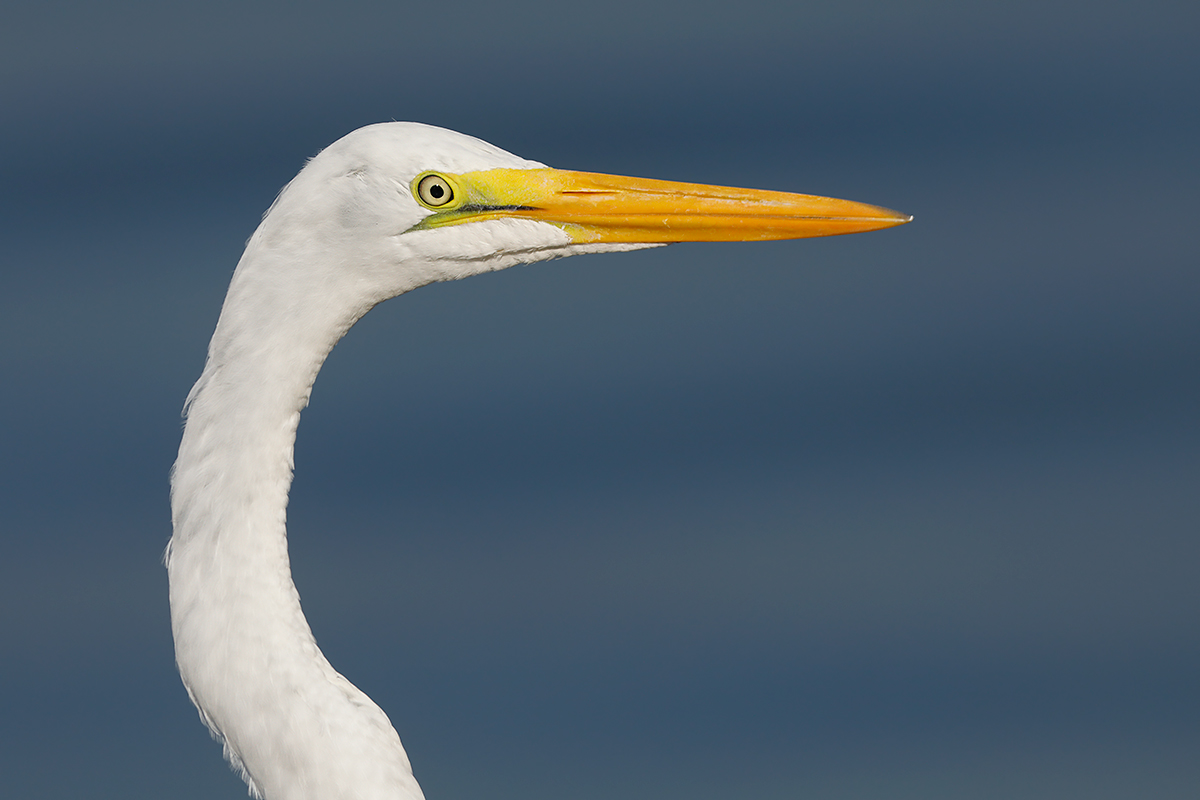
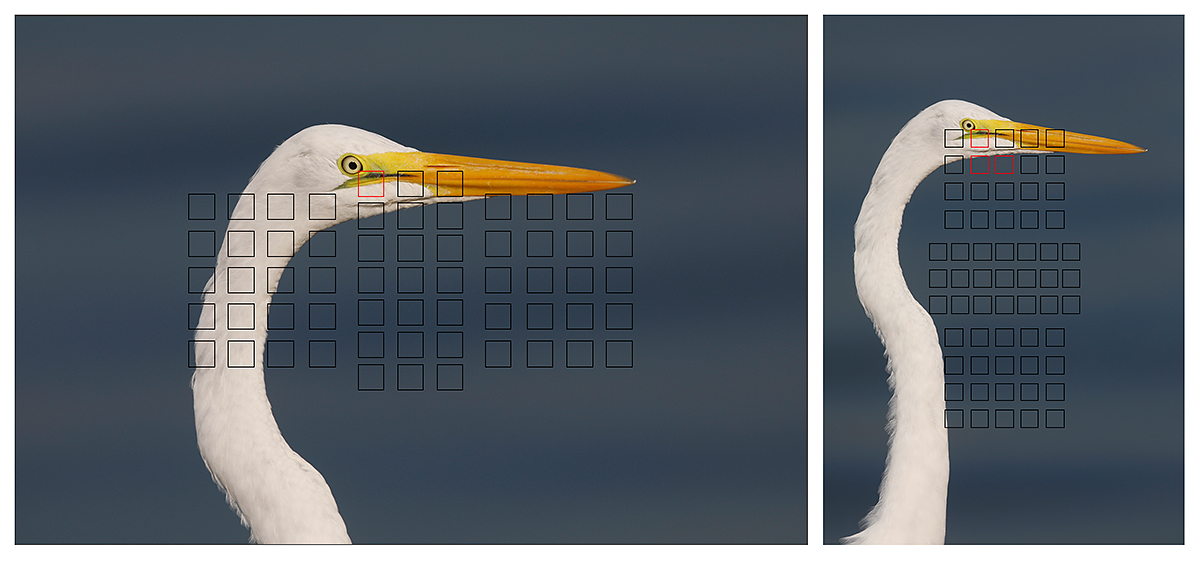
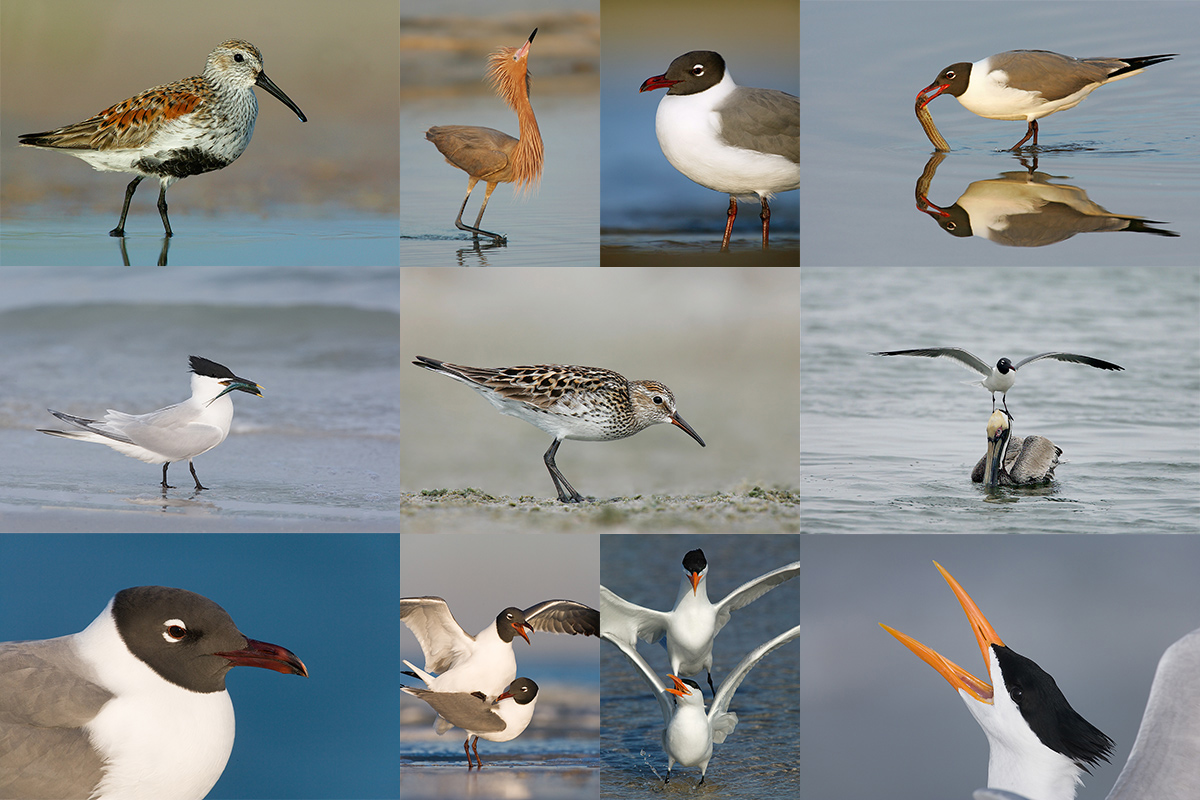
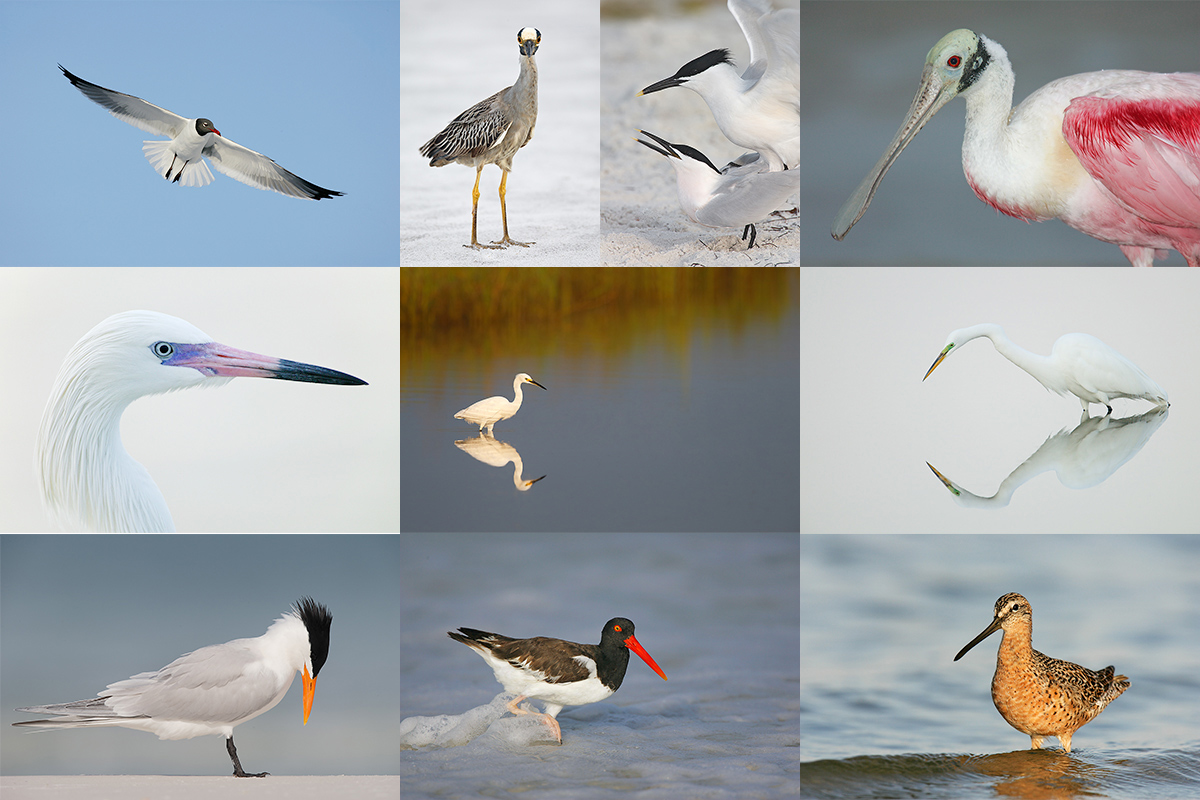













My first response was exactly the same as Elinor’s in favouring the first image. However the sharpness of that eye sure does grab the attention. The “eye popper” wins on my 5K iMac.
I like the vertical image better. It shows off the long neck which is a hallmark of these birds; and it has beautiful feather detail on the back of the neck.
I prefer the vertical, the neck is an integral part of the upper part of the bird and puts the head in context. The horizontal feels disjointed to me.
I don’t like images of just heads, there is so much more to see of one of natures wonderful birds.
Best and love
Kel
UK
Visual appeal perhaps the vertical but for image quality the horizontal.
Do you think point selected was fortuitous? I would usually go for singe point with points around narrow the area.
I am a nut for verticals so I am bit biased to start with. I think the vertical completes the “S” curve better of the bird’s neck. The horizontal leaves me wanting to see more neck.
Both images are wonderful, but I like the landscape one best. The landscape version is a closer shot of the face of the egret and it feels more personal.
They’re both beautiful, obviously, but my strong preference is for the horizontal layout. Even though the bird itself is the same in each, the framing really changes the sense of what is happening outside the photo itself. The vertical/portrait layout feels cool and still, as if the bird is surveying its area. It feels regal, calm, inactive. The horizontal one feels as if its a moment caught in action – as if the bird is about to strike. It feels more like a captured moment rather than a contemplative portrait. I prefer the action – so the horizontal is a clear winner for me.
Hi, Artie. Thanks for the great AF tip. I prefer image 2. I generally prefer landscape to portrait and I like the flow of the bird’s neck and head in this one.
First, I’m an engineer, not an artist, so I have to qualify my response with that….
I think Image 1 (portrait) is more artistic feeling with the lines and shape of the neck. Very elegant. However, Image 2 (landscape) is just more captivating to me. It makes me want to really look at the image longer. To me, that’s a sign of a great image and the one I would rather have on my wall in my office.
I feel the portrait format shows off the bird’s elegance while the landscape format highlights the intensity of its stare and a feeling of being ready to strike (thought that may also be partly down to the slightly different neck position). The portrait feels a bit more forumlaic and the more I look at them the more I like the landscape.
I guess it comes down to what feeling you want to portray.